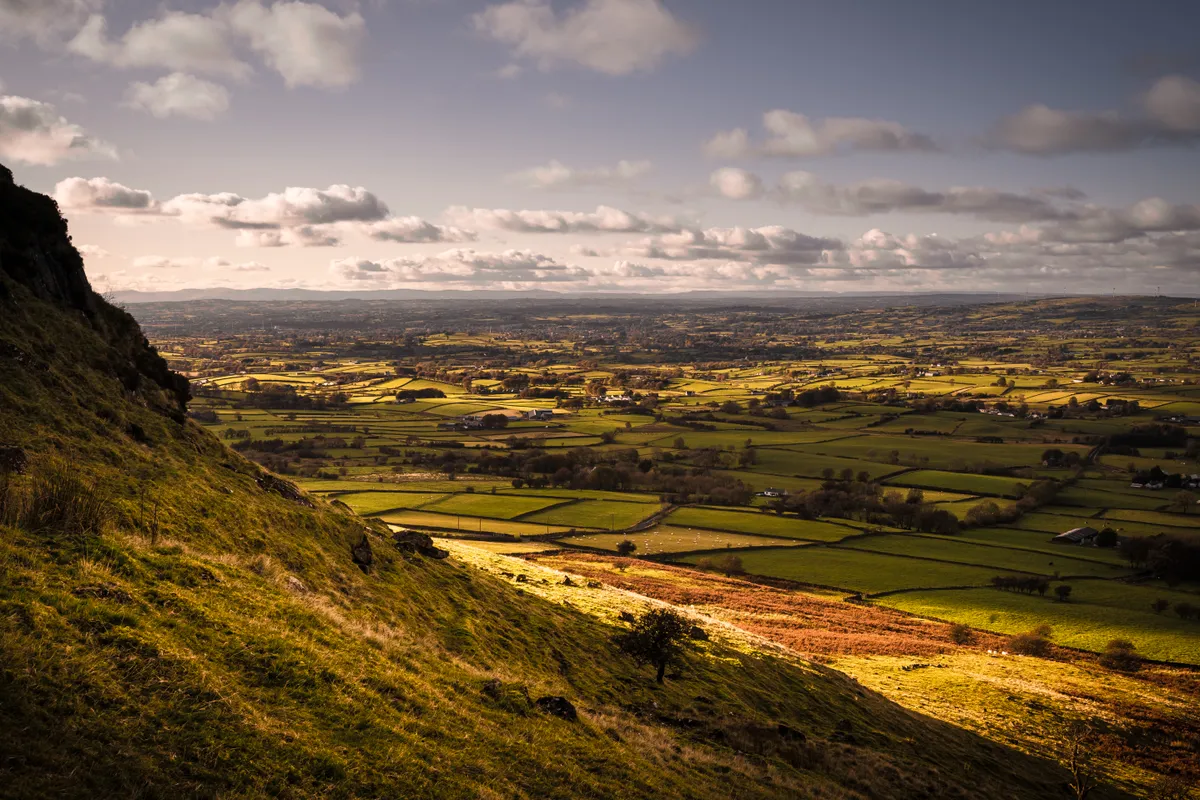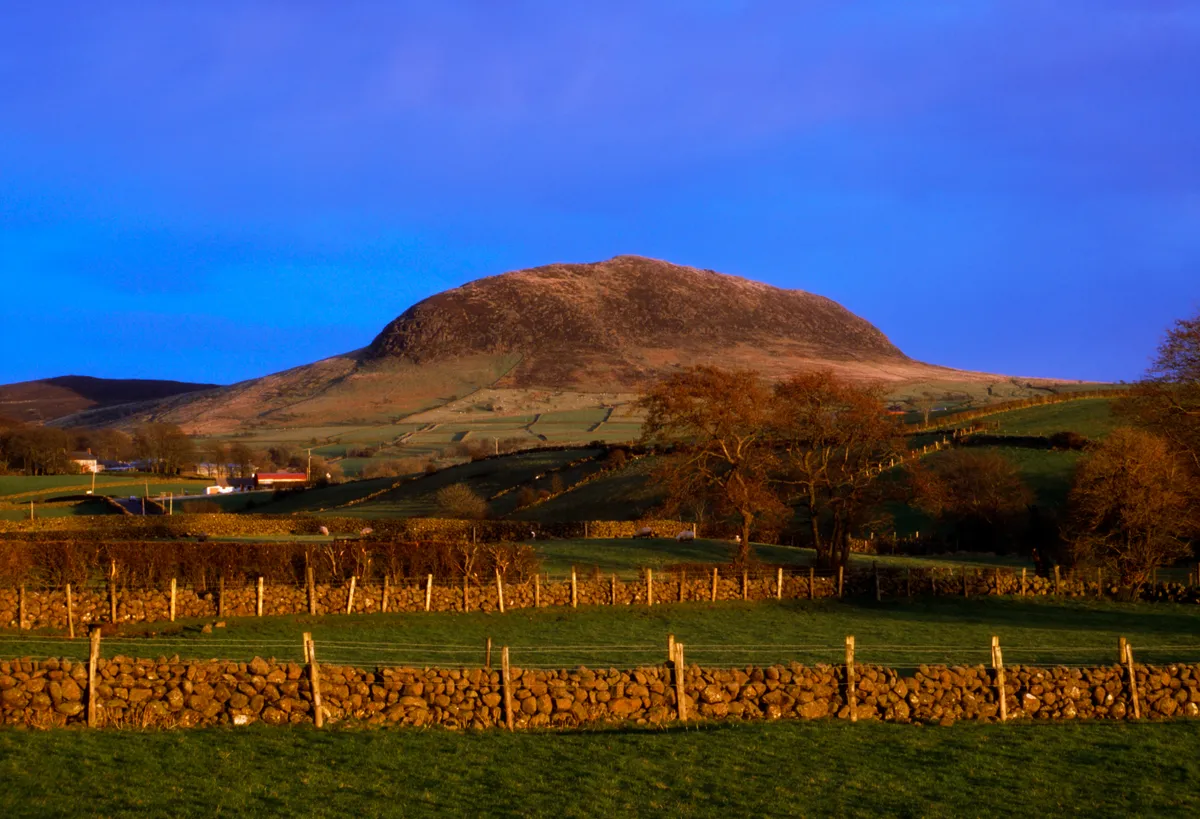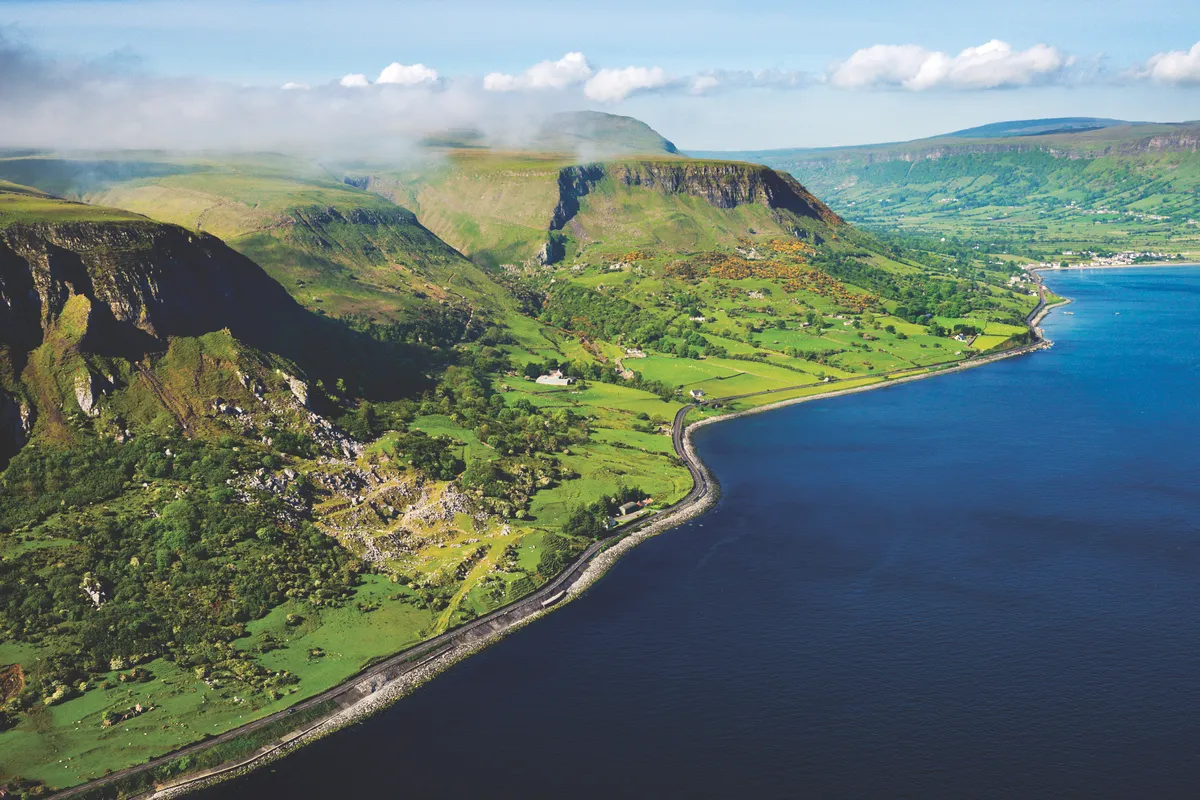Slemish is a name familiar to most inhabitants of Northern Ireland. Rising abruptly from its flat surrounds, the hill is an unmissable landmark of County Antrim.
Walkers know it as a short, steep climb that provides vast views, but there are so many stories associated with the hill, even those who have never seen it can recall its myths and legends.

St Patrick’s Epiphany
The most enduring story links the mountain with St Patrick, Ireland’s patron saint, born in Britain c385 AD to a family of Roman heritage. Yet at the age of 16, he was kidnapped by Irish raiders and sold as a slave to a chieftain from County Antrim.
For six years Patrick was forced to work as a herdsman, tending sheep and pigs on the rocky slopes of Slemish. He often prayed on the summit as he tried to reconcile himself to life as a slave, undergoing profound spiritual development. After six years he escaped and returned to Britain. There he had a dream in which he heard God calling him to return to Ireland.
Patrick was consecrated a bishop in 432, before travelling around Ireland, spreading the word of Christianity. His success at converting the Irish people is well documented. Today, Slemish is celebrated as the site of his epiphany, and the faithful still gather on the summit every Saint Patrick’s Day to commemorate his life and work.

Volcanic Origins
Beside its religious links, the mountain’s other distinguishing feature is its unique geology. Slemish is in fact the core of an ancient volcano. During Tertiary times, this entire region was subject to two million years of intense volcanic activity. Numerous other former volcanoes lie dotted around the Antrim plateau, and nearby formations such as the Giant’s Causeway bear testament to the amount of lava that flowed.
Slemish was once magma filling the crater of a much larger volcano. The magma cooled slowly and became dolerite, a hard rock typical of volcanic plugs. Subsequent erosion has stripped away the surrounding volcano, exposing the plug and leaving the distinctive hill we see today.
You may also like:

Summit bound
Exploring the mountain could not be easier from a walker’s perspective. Park in Slemish car park at the base of the hill, then follow an informal path that loops over the summit. Though just 1¼ miles long, the circuit includes 200m (650ft) of ascent, and takes a little over an hour to complete.
It is a short but steep climb, crossing rocky outcrops as you near the top. Adventurous children particularly enjoy the challenge of scaling the slope. The reward for your effort is incredible 360° views, with the Scottish mountains visible across the Atlantic.
